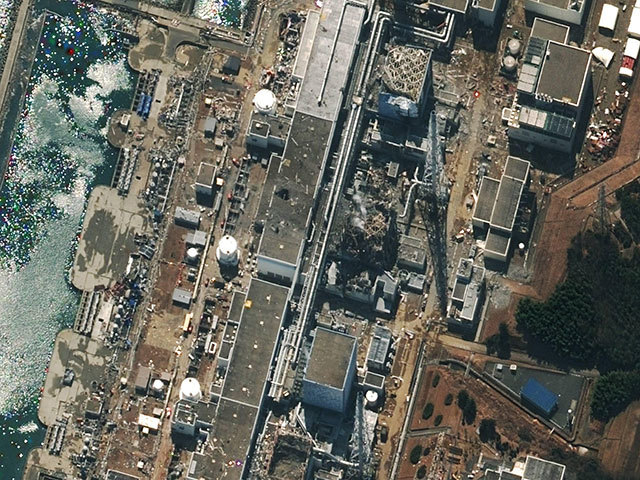
Prime Minister Shinzo Abe’s government stopped short of setting goals for renewable energy in the final version of a draft plan that reinforces atomic power’s role in Japan’s energy future, calling it a vital source of generation.
The policy describes nuclear as “an important base-load energy source,” according to a 78-page draft obtained by Bloomberg News. The plan, the first update to the nation’s energy policy since the 2011 Fukushima crisis, is expected to be approved as early as April 11, Deputy Chief Cabinet Secretary Katsunobu Kato said at a press conference.
The plan represents a compromise for coalition partner New Komeito, which had pushed for the inclusion of specific targets for renewable sources. The party pledged during an election campaign in 2012 that clean energy would provide 30% of Japan’s electricity by 2030, or 35% if hydropower is included.
The new policy says Japan will aim to introduce clean energy at levels that “further” exceed previously announced targets. The ruling parties earlier sought to say renewables should “significantly” exceed old targets.
A plan published in 2010 by a previous government envisioned Japan getting about 20 percent of its electricity from clean energy and 53 percent from nuclear by 2030.
The new policy was approved by Abe’s Liberal Democratic Party and New Komeito last week, despite deep divisions over nuclear energy in Japan. 69% of respondents to a poll last month published by the Tokyo Shimbun said nuclear power should be phased out.
While the policy describes Japan’s intention to reduce nuclear reliance, it also says reactors will be restarted once their safety is confirmed. “We will reduce our dependency on nuclear as much as possible,” according to the final draft.
The Komeito earlier sought to end Japan’s reliance on nuclear power, a position also taken by the country’s previous administration, which was voted out of power in December 2012.
Nuclear plants provided more than a quarter of Japan’s electricity before the earthquake and tsunami of March 2011 caused meltdowns at Tokyo Electric Power Co’s Fukushima Dai- Ichi plant.
Japan’s 48 operable commercial reactors have since been shut because of earthquake damage or for maintenance or safety checks. The country has been nuclear-free since September 2013.
Eight of Japan’s regional utilities including Tokyo Electric, the operator of the wrecked Fukushima nuclear plant, applied for safety checks for some of their reactors.
Japan’s Nuclear Regulation Authority said in March that it would expedite safety checks on two of Kyushu Electric’s reactors, raising the prospect that some nuclear capacity may be restored ahead of peak power demand in summer.
Japan currently gets 1.6% of its electricity from sources such as wind and solar, with hydropower providing 8.4%.
Recommended for you
